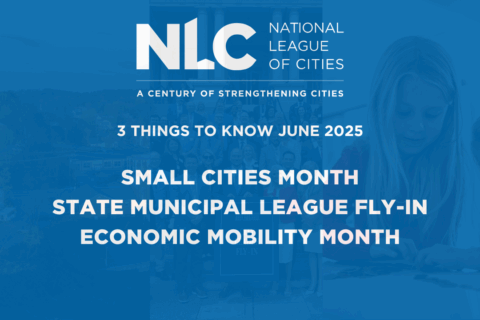A central aim of NLC’s Cities of Opportunity initiative is to help city leaders redefine their view of “progress” from one that uses economic or growth measures alone to one that defines progress as “well-being for all people.”
Doing so requires, first, getting everyone on the same page about what “well-being” is, which can be a communication challenge since people define well-being in many ways across various cultures, disciplines, ages, and population groups.
Second, shifting the view of progress requires demonstrating how improving well-being is important to the work of city leaders, which may not be immediately evident.
These are challenges the city team from Houston addressed during their participation in the Cities of Opportunity initiative. But, reaching a shared understanding enabled them to shift to a well-being perspective as they worked to address one of the city’s most visible signs of health inequity: the impact flooding has on disinvested neighborhoods.
They did so by re-envisioning the city’s approach to stormwater management: from one traditionally based on a benefit/cost-ratio proposition to one focused on community well-being and resilience.

“As somebody who’s a trained engineer, the a-ha moment for me was thinking beyond ‘the performance of the infrastructure’ to ‘human interaction with the infrastructure’—a people solution rather than a pipe solution.”
– Carol Haddock, Director of Houston Public Works
To help build a similar focus on “improved well-being” as a measure of progress, here is a suggested three-step approach to conveying the concept of “well-being as city work,” excerpted from the Plain Talk communication tools being developed to support city leaders.
1. Well-being is more than physical health.
- It is a combination of things: a person’s physical, mental, emotional, economic, social and spiritual health.
2. So, well-being takes more than having good hospitals and enough doctors.
- Because it results from a combination of things: social, economic and environmental conditions.
3. In fact, many of the most important things that impact a community’s well-being fall within the realm of local government.

From this foundation, begin layering on simple, clear examples of how city leaders and community partners have significant power to influence the well-being of residents and how city residents’ sense of well-being can be a valuable tool for making policy decisions.
The upcoming Cities of Opportunity Solutions Forum will include a discussion on additional communication challenges facing city leaders and what tools can be developed to support communication efforts.
Register for the Solutions Forum
Ready to learn more about what you can do to enhance community well-being at home? Register today for the Cities of Opportunity Solutions Forum on Wednesday, May 8. This half-day, virtual event brings together city leaders, philanthropists, and health experts to discuss what’s happening on the front lines of the fight for better health equity across America.








